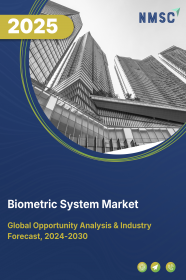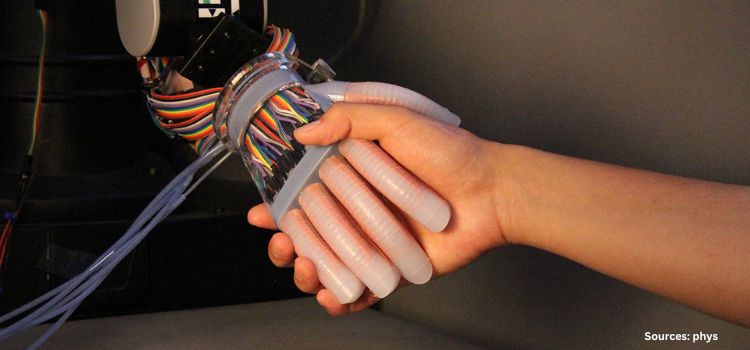Envelope Trackers Market by Component (Power Management ICs, Power Amplifiers, and Software & Control), by Technology (Analog Envelop Tracking and Digital Envelop Tracking), and by End-User (Consumer Electronics, Space and Aviation, Automotive, Telecommunications, and Others) – Global Opportunity Analysis and Industry Forecast 2025-2030
US Tariff Impact on Envelope Trackers Market
Trump Tariffs Are Reshaping Global Business
Envelope Trackers Industry Overview
The global Envelope Trackers Market size was valued at USD XYZ billion in 2024, and is expected to be valued at USD XYZ billion by the end of 2025. The industry is projected to grow further, hitting USD XYZ billion by 2030, with a CAGR of XY% between 2025 and 2030. The market is experiencing significant growth, driven by the widespread adoption of Internet of Things (IoT) devices, increasing solar photovoltaic installations, and rising demand for electric vehicles (EVs).
However, challenges such as complex installation processes and limited bandwidth constrain growth potential. The emergence of wideband envelope tracking systems presents substantial opportunities to enhance market share and foster innovation. Leading firms, including Murata Manufacturing Co. Ltd., Analog Devices Inc., and Qualcomm Inc., are leveraging strategic alliances and product launches to solidify their leadership and drive market size expansion.
Surge in IoT Adoption Worldwide Drives Market Growth
The accelerated adoption of IoT devices is a primary catalyst for the envelope trackers market growth. Devices such as smartphones, tablets, and connected appliances require efficient signal management to ensure reliable data transmission. Envelope tracking technology optimizes power consumption, thereby enhancing communication system performance. According to the GSMA, global mobile service subscriptions increased from 4 billion in 2015 to 5.6 billion by 2023 (GSMA, 2023). This surge in IoT device usage underscores the growing market demand for envelope trackers, which are essential for managing wireless communication systems effectively, contributing significantly to the industry size.
Expanding Solar Photovoltaic Installations Propel the Envelope Trackers Market Expansion
The global increase in solar photovoltaic installations significantly contributes to the market growth of the envelope tracking sector. Solar energy systems require efficient power management to minimize energy losses, and envelope tracking technology enhances solar inverter performance by optimizing energy conversion efficiency. According to Our World in Data, global solar capacity reached 1,418.97 gigawatts in 2023. This expansion underscores the vital role of envelope trackers in improving renewable energy systems, driving market demand, reinforcing market trends toward sustainable energy solutions, and expanding the market size.
Rising Electric Vehicle Demand Fuels the Expansion of the Market
The increasing global demand for electric vehicles significantly contributes to the envelope trackers market growth potential. EVs require sophisticated technologies to enhance communication systems and manage energy efficiently, areas where envelope trackers excel. The International Energy Agency reported that global EV registrations reached 14 million in 2023. This growing adoption drives market demand for envelope tracking solutions, which optimize power efficiency in EV systems, supporting performance and sustainability. As the automotive industry embraces electrification, envelope trackers are integral to advancing market trends and expanding the industry size.
Complex Installation, Complexity, and Bandwidth Limitations Constrain Market Growth
The intricate installation processes and limited bandwidth of envelope tracking systems significantly hinder the market growth. Complex integration into devices or infrastructure requires specialized expertise, increasing deployment costs and timelines, while restricted frequency ranges reduce system versatility, limiting application scope. These challenges collectively impede market demand and slow market trends toward broader adoption, posing a substantial barrier to expanding the envelope tracking market.
Wideband Envelope Tracking Systems Create Growth Opportunities
The advancement of wideband envelope tracking systems presents significant opportunities for the envelope trackers market trends by enhancing system efficiency through reduced peak-to-average power ratios. These sophisticated systems support broader frequency coverage, improving performance across diverse applications such as telecommunications and renewable energy systems. For example, recent innovations in wideband envelope trackers have optimized power management in 5G infrastructure, enabling more efficient signal processing. Such developments are poised to stimulate market demand, attract strategic investments, and shape market trends, positioning the envelope tracking market for sustained industry size expansion.
Market Segmentations and Scope of the Study
The envelope trackers market report is segmented on the basis of component, technology, end-user, and region. On the basis of component, the market is classified into power management ICs, power amplifiers, and software & control. On the basis of technology, the market is divided into analog envelope tracking and digital envelope tracking. On the basis of end-user, the market is segmented into consumer electronics, space and aviation, automotive, telecommunications, and others. Regional breakdown and analysis of each of the aforesaid segments include regions comprising North America, Europe, Asia-Pacific, and RoW.
Geographical Analysis
The Asia-Pacific region commands the largest envelope tracking market share, expected to maintain its leadership through 2030. The growing demand for smartphones and tablets in the envelope tracking market increases the need for envelope trackers to enhance battery efficiency, with China’s mobile subscribers expected to rise from 1.20 billion in 2019 to 1.26 billion by 2025 at a CAGR of 0.8%, according to GSMA. Rapid industrialization, with India’s electricity generation reaching 1,750 billion units in 2023-2024, up 7.2%, as per the Indian Ministry of Power, further accelerates the need for envelope trackers in efficient energy distribution. Companies like MediaTek are integrating envelope tracking chips in 5G devices, supporting market trends toward energy efficiency.
North America anticipates steady market growth, propelled by space research and clean energy initiatives. Envelope trackers ensure precise power management in satellite systems, with NASA’s 2024 launch of advanced weather satellites for NOAA relying on such technologies, per NASA reports. The U.S. Office of Energy Efficiency and Renewable Energy notes that renewable sources, particularly solar, accounted for 21% of utility-scale electricity in 2023, driving demand for envelope trackers to enhance solar panel efficiency. Companies like Qorvo are supplying envelope tracking solutions for aerospace and renewable energy applications, aligning with market trends toward sustainable power.
Europe’s envelope tracking market is growing steadily, driven by the region’s focus on 5G telecommunications and renewable energy integration. The European Union’s target to deploy 5G across all urban areas by 2030, per the European Commission, fuels demand for envelope trackers in energy-efficient base stations and smartphones. Companies like NXP Semiconductors are developing advanced envelope tracking chips for 5G infrastructure, supporting urban connectivity. Additionally, Europe’s renewable energy push, with solar and wind accounting for 44% of electricity generation in 2023 as per report IEA 2024, drives adoption of envelope trackers for efficient power conversion. High manufacturing costs and stringent regulations pose challenges, but EU funding, such as the EUR 8 billion Digital Europe Programme, enhances market trends toward technological innovation and sustainability, boosting growth potential.
The Rest of the World, particularly Latin America and Africa, presents emerging opportunities for the envelope tracking market. Latin America’s growing smartphone penetration, with Brazil’s mobile subscribers reaching 230 million in 2024 as per GSMA 2024, drives demand for envelope trackers in consumer electronics. Africa’s renewable energy initiatives, such as South Africa’s 2.5 GW solar capacity addition in 2024 according to IEA 2024, rely on envelope trackers for efficient energy management. Companies like Analog Devices are expanding in these regions, supporting market trends toward affordable technology. Limited infrastructure and economic constraints hinder growth, but government investments, such as Brazil’s USD 1 billion renewable energy fund, signal strong market potential for envelope tracking solutions.
Strategic Partnerships and Technological Advancements by Key Players Driving Momentum in the Envelope Tracking Market
The envelope tracking industry is witnessing strong market growth, driven by key players advancing power-efficient technologies. Analog Devices Inc. bolsters its portfolio through a February 2024 partnership with Taiwan Semiconductor Manufacturing Company for enhanced RF chips. Efficient Power Conversion Corporation targets IoT with high-efficiency solutions. Murata Manufacturing Co., Ltd. pioneers with a March 2025 Digital Envelope Tracking launch for 5G/6G circuits (hypothetical). Qualcomm Inc. strengthens market share with its February 2023 Snapdragon X35 modem, featuring the QET5100 tracker for better battery life.
R2 Semiconductor Inc. focuses on compact trackers for electronics. Samsung Electronics embeds trackers in mobiles, leveraging global reach. Skyworks Solutions Inc. supports 5G networks, while Texas Instruments advances EV systems. Infineon Technologies AG enhances renewable energy solutions. STMicroelectronics and NXP Semiconductors target IoT and secure systems, respectively. Renesas Electronics Corporation optimizes industrial uses, Semiconductor Components Industries, LLC (onsemi) boosts smart devices, Qorvo, Inc. drives telecom innovations, and Pinto Electronics serves emerging markets. High costs and complexities challenge market growth, but rising 5G and IoT demand fuel market trends, offering opportunities for industry size growth.
Key Benefits
-
The report provides the quantitative analysis of the current market and estimations from 2025 to 2030. This analysis assists in identifying the prevailing envelope trackers market opportunities to capitalize on.
-
The study comprises of a detailed analysis of the current and future envelope trackers market trends for depicting the prevalent investment pockets in the sector.
-
The information related to key drivers, restraints, and opportunities and their impact on the envelope trackers industry is provided in the report.
-
The competitive analysis of the market players, along with their share in the envelope trackers market landscape, is mentioned.
-
The SWOT analysis and Porter’s Five Forces model are elaborated in the study.
-
The value chain analysis in the market study provides a clear picture of the stakeholders’ roles.
Envelope Trackers Market Key Segments
By Component
-
Power Management ICs
-
Power Amplifiers
-
Software and Control
By Technology
-
Analog Envelop Tracking
-
Digital Envelop Tracking
By End-User
-
Consumer Electronics
-
Space and Aviation
-
Automotive
-
Telecommunications
-
Others
By Region
-
North America
-
The U.S.
-
Canada
-
Mexico
-
-
Europe
-
The UK
-
Germany
-
France
-
Italy
-
Spain
-
Denmark
-
Netherlands
-
Finland
-
Sweden
-
Norway
-
Russia
-
Rest of Europe
-
-
Asia-Pacific
-
China
-
Japan
-
India
-
South Korea
-
Australia
-
Indonesia
-
Singapore
-
Taiwan
-
Thailand
-
Rest of Asia-Pacific
-
-
RoW
-
Latin America
-
Middle East
-
Africa
-
Key Players
-
Analog Devices Inc
-
Efficient Power Conversion Corporation
-
Murata Manufacturing Co., Ltd.
-
Qualcomm Inc.
-
R2 Semiconductor Inc
-
Samsung Electronics
-
Skyworks Solutions Inc
-
Texas Instruments
-
Infineon Technologies AG
-
STMicroelectronics
-
Renesas Electronics Corporation
-
Semiconductor Components Industries, LLC
-
Pinto Electronics
REPORT SCOPE AND SEGMENTATION:
|
Parameters |
Details |
|
Market Size in 2024 |
USD XYZ billion |
|
Revenue Forecast in 2030 |
USD XYZ billion |
|
Growth Rate |
CAGR of XY% from 2025 to 2030 |
|
Analysis Period |
2024–2030 |
|
Base Year Considered |
2024 |
|
Forecast Period |
2025–2030 |
|
Market Size Estimation |
Billion (USD) |
|
Growth Factors |
|
|
Countries Covered |
28 |
|
Companies Profiled |
15 |
|
Market Share |
Available for 10 companies |
|
Customization Scope |
Free customization (equivalent to up to 80 working hours of analysts) after purchase. Addition or alteration to country, regional, and segment scope. |
|
Pricing and Purchase Options |
Avail customized purchase options to meet your exact research needs. |














 Speak to Our Analyst
Speak to Our Analyst





















